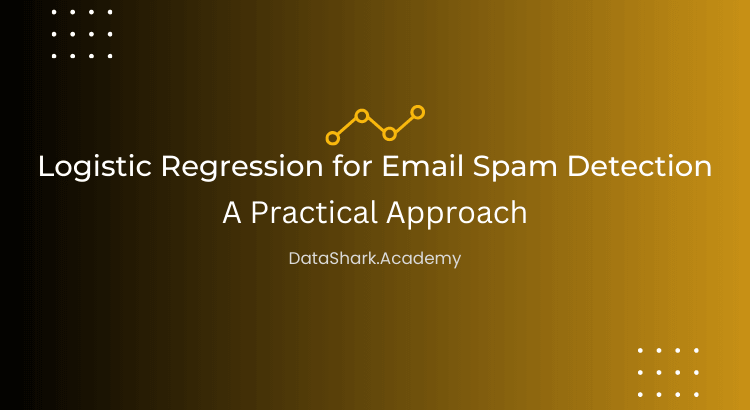Decision trees are a popular and powerful tool in machine learning for solving both classification and regression problems. They are widely used in various...
Continue readingTag: Python
What is Python
Python is a popular high-level, interpreted, and dynamically-typed programming language. It was created by Guido van Rossum and first released in 1991. Python is known for its simplicity, readability, and versatility, making it a widely-used language in various domains, including web development, data science, machine learning, scientific computing, artificial intelligence, automation, and more.
Python has a large standard library that provides numerous modules and packages for various functionalities, making it easy to develop applications and solve complex problems efficiently. Python’s syntax is designed to be easy to understand and write, with a focus on code readability, which makes it a popular choice for both beginners and experienced developers.
Some of the key features of Python include its dynamic typing, automatic memory management, extensive standard library, support for multiple programming paradigms (such as procedural, object-oriented, and functional programming), and a large and active community of developers who contribute to its development and create third-party libraries and frameworks.
Python has a vast ecosystem of libraries and frameworks that extend its capabilities, such as NumPy for numerical computing, Pandas for data analysis, Django for web development, TensorFlow for machine learning, and many more. This makes Python a powerful tool for a wide range of applications and domains.
Overall, Python is a versatile, powerful, and user-friendly programming language that is widely used in various fields, making it a popular choice for developers, data scientists, researchers, and enthusiasts alike.
Whether you are new to Python or already familiar with the language, our blog will provide valuable insights, practical tips, and comprehensive tutorials to help you level up your Python skills and explore the vast possibilities of this powerful programming language. So, buckle up and get ready to embark on an exciting journey into the world of Python!
Logistic Regression for Email Spam Detection: A Practical Approach
Logistic Regression is a statistical method used for binary classification, where the goal is to predict the probability of an outcome belonging to one...
Continue readingLinear Regression Made Easy: Step-by-Step Guide in Python
Linear regression is a widely used statistical technique in machine learning that models the relationship between a dependent variable and one or more independent...
Continue readingBenchmarking in Python: Techniques and Best Practices for Performance Evaluation
Benchmarking is a powerful technique for evaluating and comparing the performance of different code snippets, functions, or algorithms in Python. It involves measuring the...
Continue readingTop 18 Python Interview Questions and Solutions for Success
In this post, we have discussed the most common interview problems and their solutions using Python. These problems include array manipulation, string manipulation, linked...
Continue readingEfficient Array Bisection Algorithm in Python – Using the Bisect Module
Bisect is a module in Python that provides functionality for performing array bisection algorithm. It allows you to efficiently search for a position to...
Continue readingPython Built-in Collection Classes for Data Manipulation: ChainMap, UserDict, UserList, and UserString
Python provides several built-in collection classes that offer advanced data manipulation capabilities. In this post, we will explore four of these classes: ChainMap, UserDict,...
Continue readingMastering Python’s enumerate and eval Functions: Syntax, Usage, and Best Practices
Enumerate and eval are two powerful built-in functions in Python that provide advanced capabilities for working with sequences and evaluating expressions dynamically. Understanding their...
Continue readingPython Filter, Map, and Zip Functions: A Comprehensive Guide
The filter, map, and zip functions are powerful tools in Python that allow you to perform various data manipulation tasks efficiently. These functions are...
Continue readingPyYaml – A Powerful Tool for Handling YAML in Python Applications
YAML (short for “YAML Ain’t Markup Language”) is a human-readable data serialization format that is often used for configuration files, data exchange, and other...
Continue readingMastering Python Type Hints: Improve Code Readability and Robustness
The ‘typing’ module in Python is a powerful tool that provides type hints for writing more robust and maintainable code. It allows developers to...
Continue readingEfficiently Managing Heap-Based Data Structures with heapq in Python
Welcome to the world of heapq in Python! If you’re looking to efficiently manage heap-based data structures in your Python projects, heapq is a...
Continue readingPolars – A Lightning-Fast DataFrame Library for Rust and Python
Polars is a high-performance DataFrame library for Rust and Python that provides powerful data manipulation, filtering, and aggregation capabilities. It offers a seamless experience...
Continue readingAdvanced Data Filtering in Python using compress, dropwhile, and filterfalse Functions
In today’s data-driven world, efficient data processing is a critical aspect of programming tasks. Python, being a versatile programming language, offers various tools and...
Continue readingPython itertools – Advanced Techniques for Efficient Iteration
The itertools module in Python is a powerful tool that provides a set of functions for efficient iteration and combinatorial operations. It is part...
Continue readingData Validation Made Easy with Pandera Python: A Comprehensive Guide
As a data professional, you know how crucial it is to ensure the quality and integrity of data in your Python projects. Data validation...
Continue readingMastering Data Manipulation with PyArrow: A Comprehensive Guide
Python has become one of the most popular languages for data manipulation and analysis, thanks to its rich ecosystem of libraries. PyArrow, a powerful...
Continue readingParallel Image Processing with Ray Python: A Step-by-Step Guide with Code Examples
Image processing tasks, such as resizing, filtering, and enhancing, can often be time-consuming, especially when dealing with a large collection of images. Ray Python,...
Continue readingScaling AI and Python Workloads Made Easy with Ray Python: An Open-Source Unified Compute Framework
Ray Python is an open-source unified compute framework that offers powerful capabilities for scaling AI and Python workloads. With its easy-to-use APIs and distributed...
Continue readingDemystifying Iterators in Python: Understanding How They Work
Iterators are an essential concept in Python that allow you to efficiently traverse through collections of data. In Python, an iterator is an object...
Continue reading



















